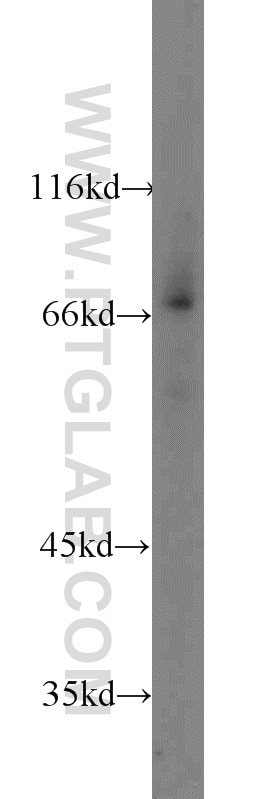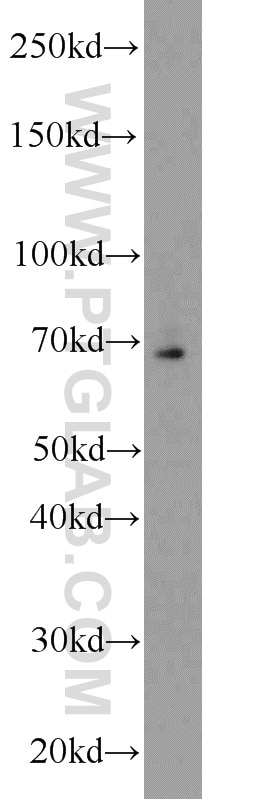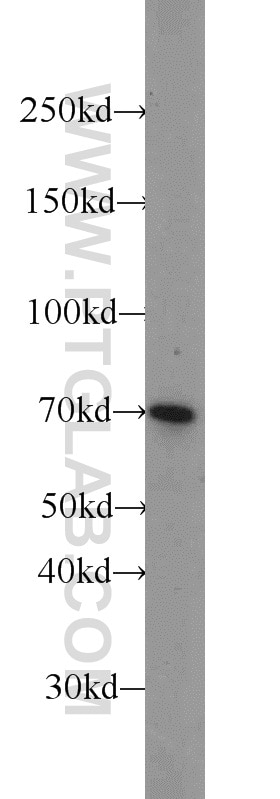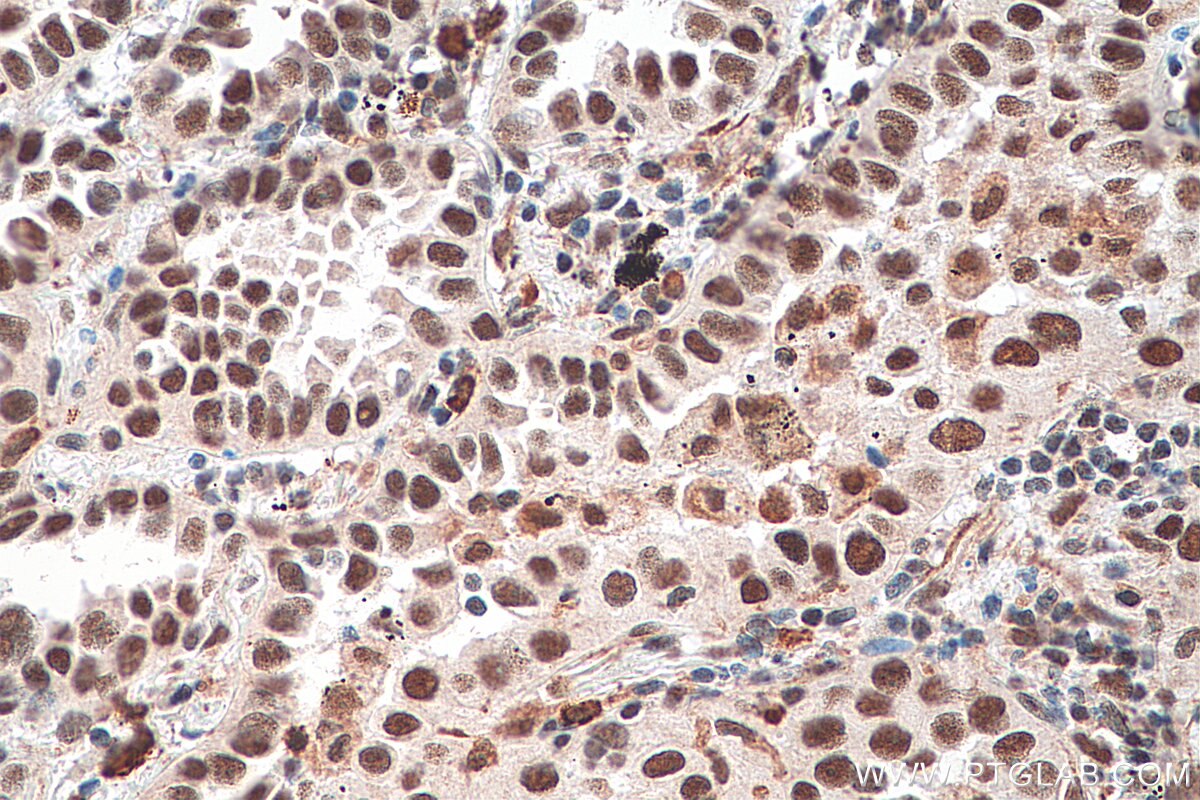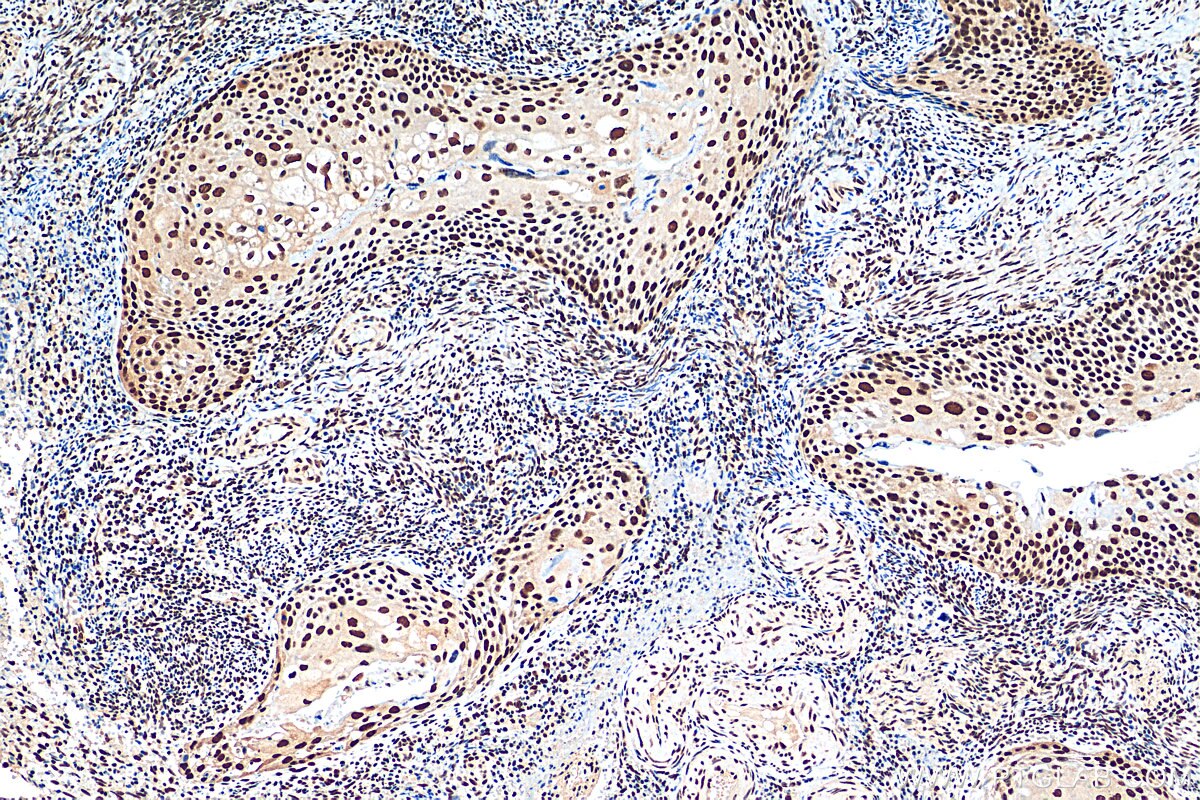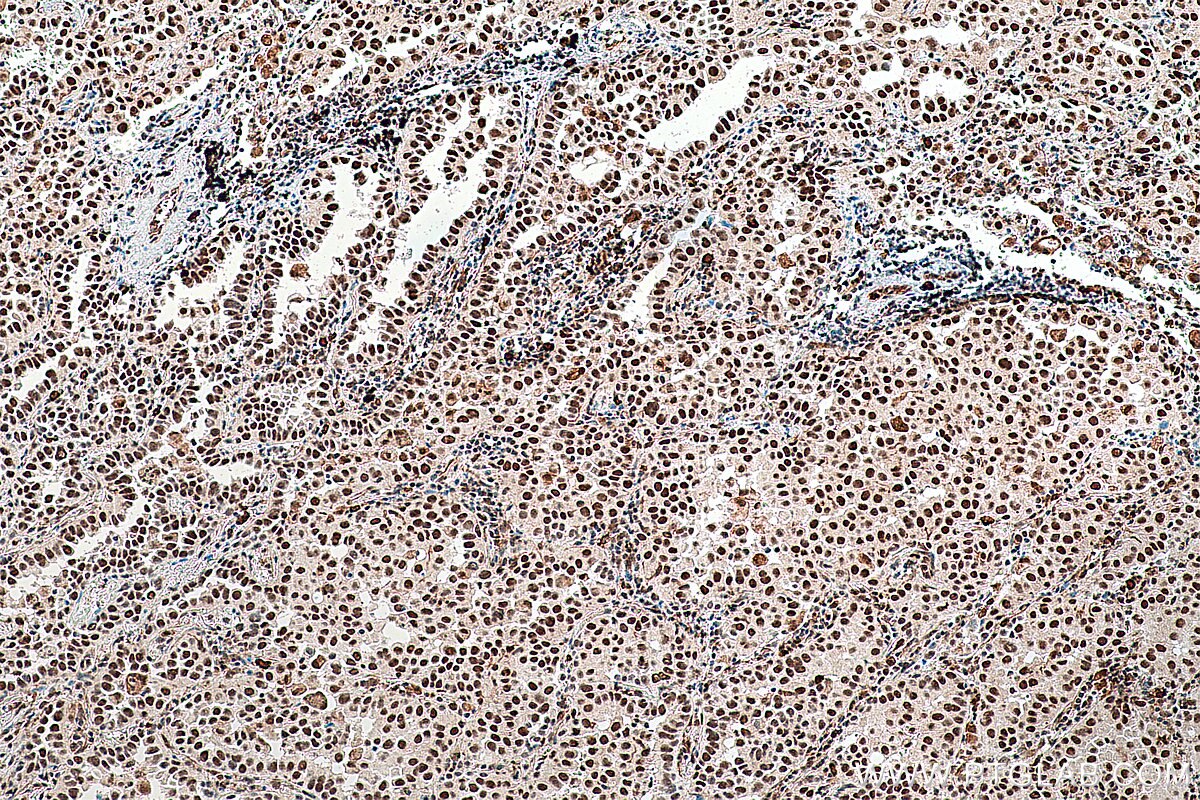Anticorps Polyclonal de lapin anti-HSF1
HSF1 Polyclonal Antibody for WB, IHC, ELISA
Hôte / Isotype
Lapin / IgG
Réactivité testée
Humain, souris et plus (1)
Applications
WB, IF, IHC, ELISA
Conjugaison
Non conjugué
N° de cat : 16107-1-AP
Synonymes
Galerie de données de validation
Applications testées
| Résultats positifs en WB | cellules K-562, cellules HepG2, cellules MCF-7, tissu rénal de souris, tissu splénique de souris, tissu testiculaire de souris |
| Résultats positifs en IHC | tissu de cancer du col de l'utérus humain, tissu de cancer du poumon humain il est suggéré de démasquer l'antigène avec un tampon de TE buffer pH 9.0; (*) À défaut, 'le démasquage de l'antigène peut être 'effectué avec un tampon citrate pH 6,0. |
Dilution recommandée
| Application | Dilution |
|---|---|
| Western Blot (WB) | WB : 1:500-1:1000 |
| Immunohistochimie (IHC) | IHC : 1:200-1:800 |
| It is recommended that this reagent should be titrated in each testing system to obtain optimal results. | |
| Sample-dependent, check data in validation data gallery | |
Applications publiées
| WB | See 11 publications below |
| IHC | See 2 publications below |
| IF | See 1 publications below |
Informations sur le produit
16107-1-AP cible HSF1 dans les applications de WB, IF, IHC, ELISA et montre une réactivité avec des échantillons Humain, souris
| Réactivité | Humain, souris |
| Réactivité citée | rat, Humain, souris |
| Hôte / Isotype | Lapin / IgG |
| Clonalité | Polyclonal |
| Type | Anticorps |
| Immunogène | HSF1 Protéine recombinante Ag9023 |
| Nom complet | heat shock transcription factor 1 |
| Masse moléculaire calculée | 529 aa, 57 kDa |
| Poids moléculaire observé | 68-80 kDa |
| Numéro d’acquisition GenBank | BC014638 |
| Symbole du gène | HSF1 |
| Identification du gène (NCBI) | 3297 |
| Conjugaison | Non conjugué |
| Forme | Liquide |
| Méthode de purification | Purification par affinité contre l'antigène |
| Tampon de stockage | PBS avec azoture de sodium à 0,02 % et glycérol à 50 % pH 7,3 |
| Conditions de stockage | Stocker à -20°C. Stable pendant un an après l'expédition. L'aliquotage n'est pas nécessaire pour le stockage à -20oC Les 20ul contiennent 0,1% de BSA. |
Informations générales
HSF1 belongs to heat-shock transcription factors that activate heat-shock response genes under conditions of heat or other stresses. Also, HSF1 has been linked with oogenesis, spermatogenesis, and placental development. It can activate AKT and inactivate JNK and CASP3 to protect cardiomyocytes from death. And it has a role in the regulation of life span and establishes a role for SIRT1 in protein homeostasis and heat-shock response. The calculated molecular weight of HSF1 is 57 kDa, but HSF1 migrates at approximately 80 kDa which likely represents different phosphorylation states (PMID: 18434628).
Protocole
| Product Specific Protocols | |
|---|---|
| WB protocol for HSF1 antibody 16107-1-AP | Download protocol |
| IHC protocol for HSF1 antibody 16107-1-AP | Download protocol |
| Standard Protocols | |
|---|---|
| Click here to view our Standard Protocols |
Publications
| Species | Application | Title |
|---|---|---|
Acta Neuropathol Commun RBM45 associates with nuclear stress bodies and forms nuclear inclusions during chronic cellular stress and in neurodegenerative diseases. | ||
Am J Physiol Cell Physiol Cancer associated fibroblasts suppressed ferroptosis in glioblastoma via upregulating lncRNA DLEU1 | ||
Ann Thorac Surg Upregulation of Nuclear Heat Shock Factor 1 Contributes to Tumor Angiogenesis and Poor Survival in Patients With Non-Small Cell Lung Cancer. | ||
Front Microbiol The Capsid Protein VP1 of Coxsackievirus B Induces Cell Cycle Arrest by Up-Regulating Heat Shock Protein 70. | ||
Pharm Biol Aspirin relieves the calcification of aortic smooth muscle cells by enhancing the heat shock response. | ||
Toxicol In Vitro Ginsenoside Rg3 induces FUT4-mediated apoptosis in H. pylori CagA-treated gastric cancer cells by regulating SP1 and HSF1 expressions. |


